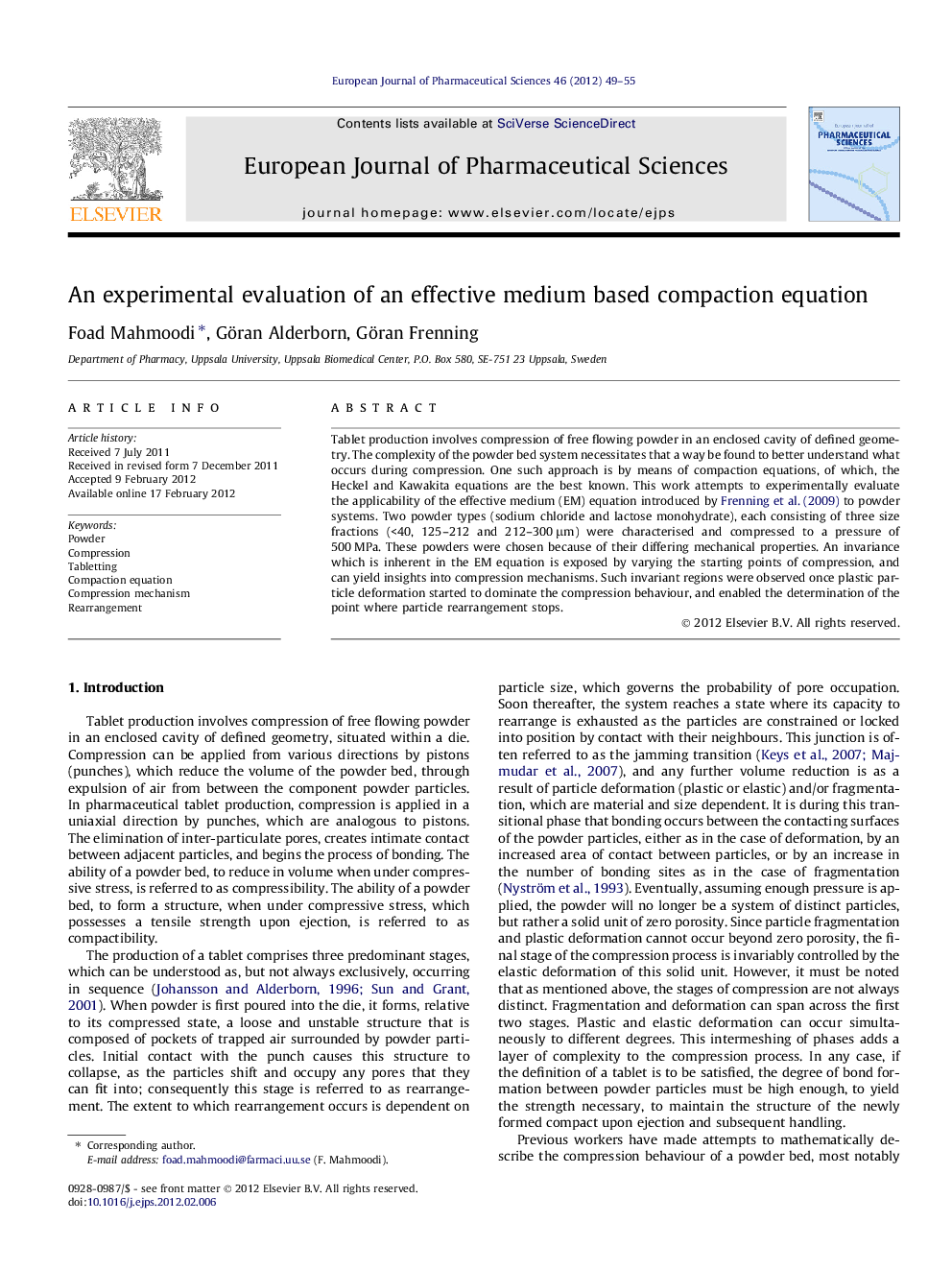| Article ID | Journal | Published Year | Pages | File Type |
|---|---|---|---|---|
| 2481151 | European Journal of Pharmaceutical Sciences | 2012 | 7 Pages |
Tablet production involves compression of free flowing powder in an enclosed cavity of defined geometry. The complexity of the powder bed system necessitates that a way be found to better understand what occurs during compression. One such approach is by means of compaction equations, of which, the Heckel and Kawakita equations are the best known. This work attempts to experimentally evaluate the applicability of the effective medium (EM) equation introduced by Frenning et al. (2009) to powder systems. Two powder types (sodium chloride and lactose monohydrate), each consisting of three size fractions (<40, 125–212 and 212–300 μm) were characterised and compressed to a pressure of 500 MPa. These powders were chosen because of their differing mechanical properties. An invariance which is inherent in the EM equation is exposed by varying the starting points of compression, and can yield insights into compression mechanisms. Such invariant regions were observed once plastic particle deformation started to dominate the compression behaviour, and enabled the determination of the point where particle rearrangement stops.
Graphical abstractFigure optionsDownload full-size imageDownload high-quality image (213 K)Download as PowerPoint slide
